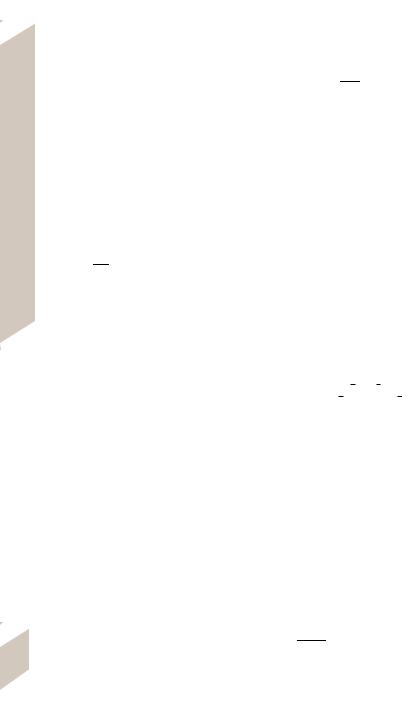
книги студ / color atlas of physiology 5th ed[1]. (a. despopoulos et al, thieme 2003)
.pdf





Further Reading
393
Despopoulos, Color Atlas of Physiology © 2003 Thieme
All rights reserved. Usage subject to terms and conditions of license.

Index, Abbreviations
|
A |
gastrointestinal tract 234 |
myosin interaction 68 |
|
|
heart action 194 |
smooth muscle 70 |
|
a (atto-, submultiple of a unit) |
motor end plate 56 |
skeletal muscle 60 |
|
393 |
NO-synthase activation 82 |
Action potential 42, 62 |
|
A (ampere), unit 375 |
pankreas 246 |
all-or-none depolarization |
|
band, muscle 60 |
parietal cells 242 |
46 |
|
AA (amino acids) 240, 258, 182, |
release 82 |
depolarization phase 46 |
|
184, 296 |
receptors ! cholinoceptors |
heart 59 A, 192, 194 |
|
Abdominal muscles 108 |
second messenger 55 F, 274, |
overshoot 46 |
|
pressure 108, 238, 264 |
276 |
pacemaker, heart 192 |
|
reflex 320 |
synthesis 82 |
postsynaptic neurons 82 |
|
Aberration, spherical 346 |
Acetylcholinesterase 56, 82 |
propagation 48 |
|
AB0 system 100 |
synaptic cleft 82 |
purkinje fibers 200 |
|
Absolut threshold, eye 352 |
Acetyl coenzyme A 284 |
repolarization phase 46 |
|
smell 340 |
A chain, insulin 282 |
retina 354 |
|
ear 362 |
Achalasia 238 |
skeletal muscle 56, 59 A |
|
Absorption, intestinal, of amino |
Acetylsalicylic acid 104 |
smooth muscle 59 A |
|
acids 258 |
cyclooxygenase inhibition |
Activating energy 40 |
|
carbohydrates 258 |
269 |
Activation system, subcortical |
|
electrolytes 262 |
Achromat 356 |
336 |
|
fat 252 |
Acid, fixed 174 |
Active immunization 94 |
|
iron 90 |
production 174 |
transport 26, 44 |
|
lipids 252 |
titratable 174, 178 |
Activin, FSH secretion 306 |
|
peptides 258 |
Acid-base balance 138, 142 |
Activity coefficient 376 |
|
vitamins 260 |
compensatory mechanisms |
Acuity, visual 348 |
|
Abstract thinking 336 |
142 |
Acyl-CoA-cholesterol acyl trans- |
|
ABP (androgen-binding protein) |
disturbances 142, 146, 176 |
ferase (ACAT) 256 |
|
306 |
kidney 174 |
Adam-Stokes attack 200 |
|
ACAT (acyl-CoA-cholesterol acyl |
liver 176 |
Adaptation, eye 350, 352, 354, |
|
transferase) 256 |
metabolic disturbances 142 |
sensors 312 |
|
Acceleration (unit) 374 |
normal parameters 142 |
smell 340 |
|
angular (rotational) 342 |
regulation 142 |
taste 338 |
|
detection 342 |
respiratory disturbances 144 |
thermosensation 314 |
|
linear (translational) 342 |
status, assessment 146 |
ADCC (antigen-dependent cell- |
|
sensor 314, 342 |
Acidosis 142 |
mediated cytotoxic- |
|
Accessory nucleus 368 |
hyperkalemic 180 |
ity) 96 |
|
Accident, electrical 200 |
influence on protein-bound |
Addison’s disease 182 |
|
Acclimatization 224 |
Ca2+ 290 |
Adenin 8 |
|
Accommodation, eye 342, 346 |
K+ concentration, plasma 180 |
Adenohypophysis 268, 280 |
|
range 342, 346 |
lact76 |
Adenosine, coronary vasodilata- |
|
reflex, intestine 244 |
metabolic 142, 262, 284 |
tion 210 |
|
rectum 264 |
nonrespiratory (metabolic) |
second messenger of 274 |
|
stomach 240 |
142, 262, 284 |
Adenosine diphosphate ! ADP |
|
ACE (angiotensin-converting |
in diarrhea 262 |
monophosphat ! AMP |
|
enzyme) 184 |
phosphaturia 178 |
triphosphat ! ATP |
|
inhibitor 184 |
renal tubular 142, 176 |
Adenylate cyclase 37 C1, 274, 276 |
|
A cells, islets of Langerhans 282, |
respiratory 126, 142, 144 |
inhibition with acetylcholine |
|
284 |
Acini, salivary gland 236 |
82 |
|
Acenocumarol 104 |
Acne 306 |
ADH ! adiuretin |
|
Acetate, conjugates 160 |
Aconitase, iron absorption 90 |
Adhesion molecule (VLA-4) 98 |
|
Acetazolamide 172 |
Acoustic information, central |
Adhesion, platelets 102 |
|
Aceton 284 |
processing 368 |
Adiadochokinesis 328 |
|
Acetylcholine 34, 52, 78ff., 236, |
pathways 368 |
Adiuretin 24, 162, 170, 269, 280 |
|
242 |
thresholds 362, 368 |
activated Cl--channels 162 |
|
antagonists 82 |
Acrosomal reaction 308 |
deficiency 166 |
|
cerebral cortex 332 |
ACTH ! corticotropin |
effects 212, 280 |
|
control of circulation 212ff. |
ACTH reserve 294 |
receptor types 24, 55 F, 166, |
394 |
coronary vasodilatation 210 |
Actin 14, 30, 56, 58, 62, 70, 82 |
280 |
esophagus 238 |
filament 14, 60 |
salt/water homeostasis 173 B |
|
|
esterase 56, 82 |
molecular structure 60 |
second messenger 24, 55 F |
Despopoulos, Color Atlas of Physiology © 2003 Thieme
All rights reserved. Usage subject to terms and conditions of license.



